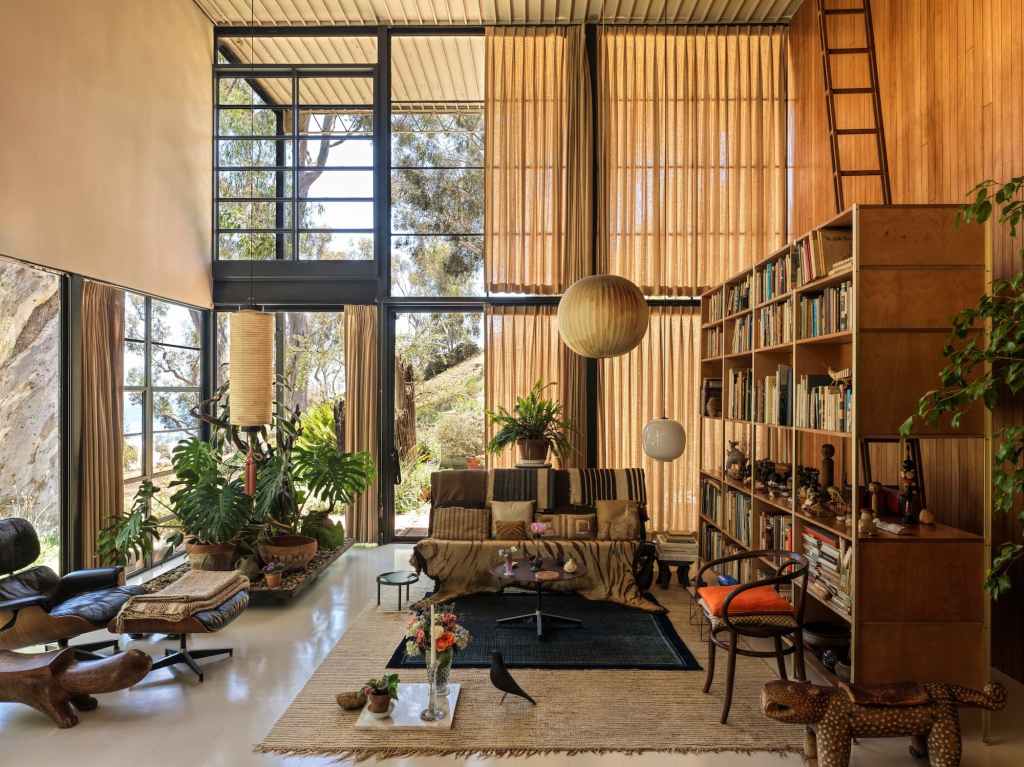This summer marks a quiet yet profound revival of the Eames legacy. In Los Angeles, the iconic Eames House—Case Study House No. 8—reopens after surviving the Palisades wildfire and undergoing an intensive conservation effort. At the same time, across the country, the Metropolitan Museum of Art has rediscovered and restored Metropolitan Overview, a visionary 1975 film by Charles and Ray Eames proposing a radical rethinking of the museum visitor experience.
These two events—one architectural, one cinematic—reveal not just the continued relevance of the Eameses’ work, but their enduring power to shape how we understand space, design, and knowledge itself. Metropolitan Overview, the rediscovered film, is now available to watch on The Met’s website, accompanied by an in-depth curatorial essay that explores its historical context, design philosophy, and lasting significance.
A Home Reopens, A Foundation Expands
When smoke from the Palisades wildfire infiltrated the Eames House earlier this year, the landmark midcentury residence faced not only environmental damage but the threat of erasure. Now, after five months of restoration, it has reopened—this time with unprecedented public access to the Eames Studio. Visitors can walk through the creative space where Charles and Ray developed films, furniture, exhibitions, and ideas that reshaped 20th-century design.
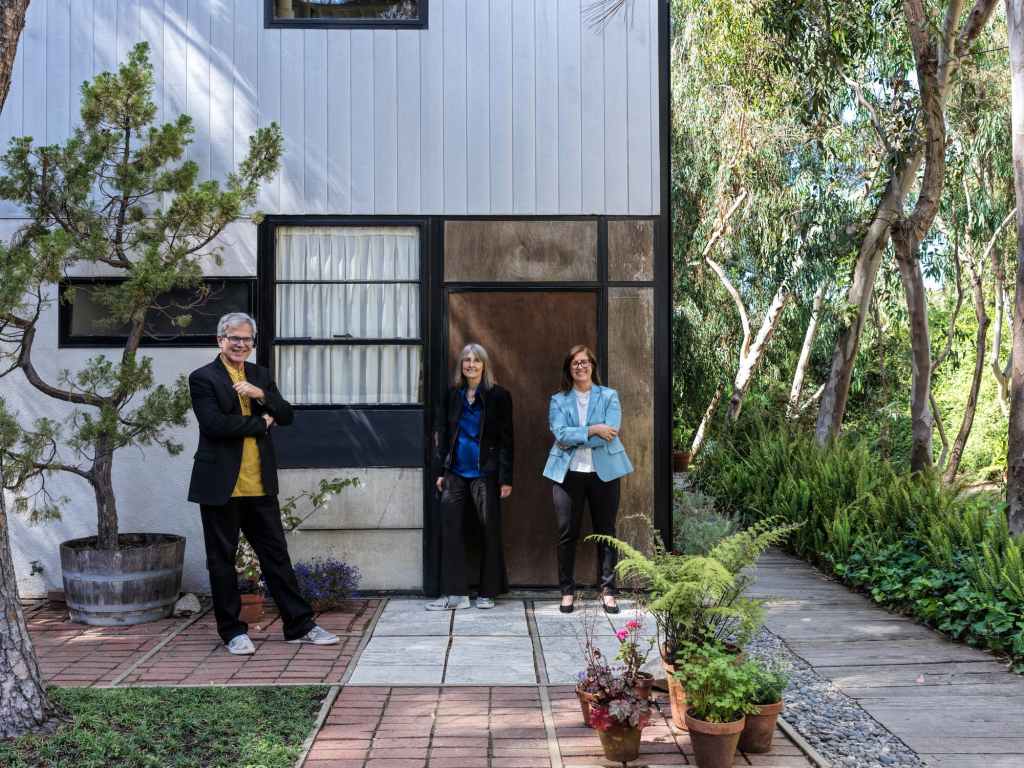
Coinciding with the reopening is the launch of the Charles & Ray Eames Foundation, a major nonprofit initiative to carry forward their work and vision. Led by Executive Director Adrienne Luce and a board composed of five Eames grandchildren, the foundation seeks to deepen global engagement with the Eameses’ legacy through fellowships, publications, and new public programs.
Adrienne Luce joins the Foundation from the HMC Designing Futures Foundation in Los Angeles, where she served as Executive Director; she previously held positions at the Claremont Museum of Art, the California State Summer School Arts Foundation, The Getty Conservation Institute, and The J. Paul Getty Museum. Luce’s 20+ years experience in leading cultural non-profits for the arts and social impact will help her build and grow the Foundation into a globally-recognized institution that preserves and promotes one of the world’s most important and diverse design legacies.
On the Board of Directors, Charles and Ray’s grandson Eames Demetrios will serve as Chairman, together with his siblings Carla Atwood Hartman, Byron Atwood (President), Llisa Demetrios, and Lucia Dewey Atwood, who will continue her leadership in the Eames House preservation as Chair of the Conservation and Collections Committee. To reflect the Foundation’s larger scope, the Board of Directors welcomes two new members, Eckart Maise, former Chief Design Officer at Vitra, and 4th-generation Eames family member Jackie Cassel, anticipating further growth during the coming months.
Its upcoming initiatives include a 2026 program on Eames architecture, the 2027 relaunch of Powers of Ten for its 50th anniversary, and the first-ever publication of Charles’s 1970–71 Harvard Norton Lectures. The Foundation will also oversee the long-term stewardship of the Eames House and convene the inaugural Eames Conference in Los Angeles in 2026, creating a new forum for professional dialog between leading Eames scholars and institutions.
“As grandchildren, it has been our honor to ensure that Charles and Ray continue to make a global impact,” said Eames Demetrios, Director of Eames Office and Foundation Chairman. “This next chapter is about succession planning and looking ahead to future generations.”
The Met as Guest and Host
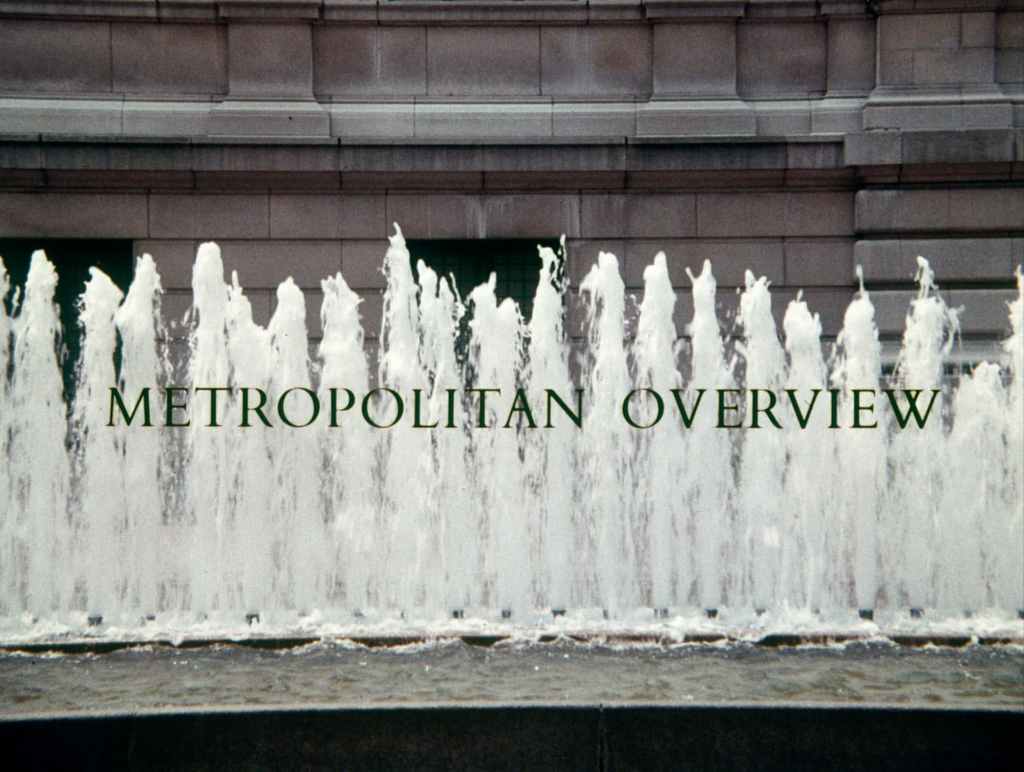
While the Foundation maps the future, another project is illuminating a lesser-known moment from the Eameses’ past. At The Met, curators and conservators have restored Metropolitan Overview, a 1975 multimedia proposal that envisioned a more accessible, emotionally intelligent museum.
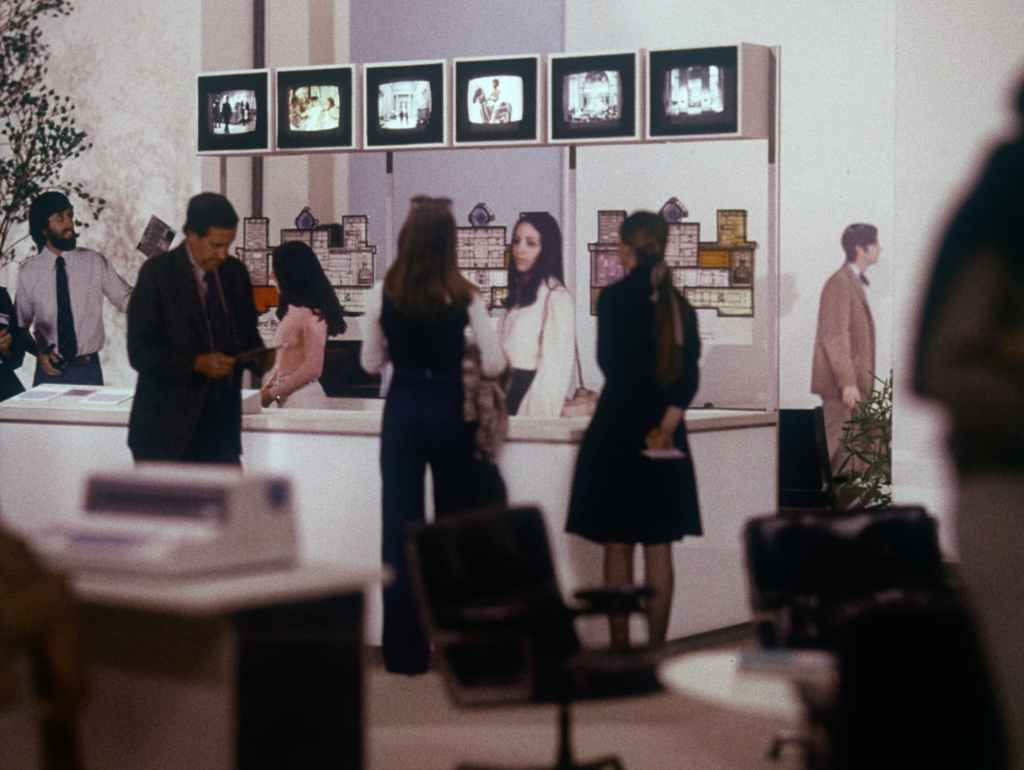
Commissioned by then-director Thomas Hoving, the project included a film and architectural model that proposed an Information Hall featuring early computer terminals, personalized tour printouts, film screening pods, and a monumental timeline that wove together world history with artifacts in the collection. It was a bold vision of technology as a bridge—not a barrier—between people and art.
“What feels starkly Eamesian,” the museum notes, “is the commitment to being ‘a good host anticipating the needs of his guest.’” This guiding ethos underpinned not only their furniture and films but also their museum work, from Mathematica to Glimpses of the U.S.A.
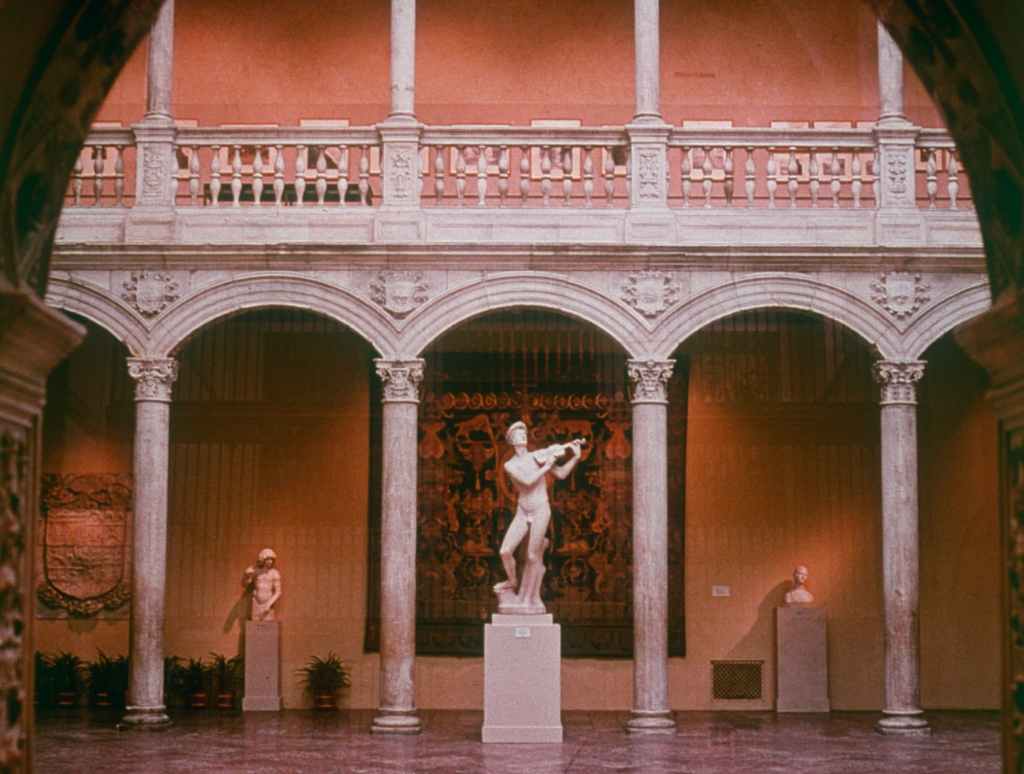
The proposal arrived just months after the opening of The World of Franklin and Jefferson, a bicentennial exhibition designed by the Eameses that toured internationally before debuting at The Met. With Charles’s death in 1978, Metropolitan Overview became one of the last major projects he and Ray created together—a culmination of their efforts to democratize learning through design.
Models, Media, and a Better Museum
At the heart of both the Los Angeles restoration and The Met’s archival resurrection lies a core Eames principle: good design is not about objects—it’s about relationships. Whether animating museum models with 35mm film or arranging jam jars at a dinner party, Charles and Ray treated every design gesture as an act of care.
Their architectural models were not just presentations—they were immersive storytelling devices. Their films were not just documentation—they were invitations. And their house was not just a home—it was a prototype for living fully and attentively.
“Eventually everything connects,” Charles famously said. That idea pulses through both the new Foundation’s programming and The Met’s rediscovered film. Together, they signal a renewed understanding that the Eameses were never merely midcentury icons—they were futurists of empathy, clarity, and connection. From archive to artifact, model to mission, the Eameses’ work continues to teach, invite, and host—with the same grace and generosity they brought to everything they touched.
